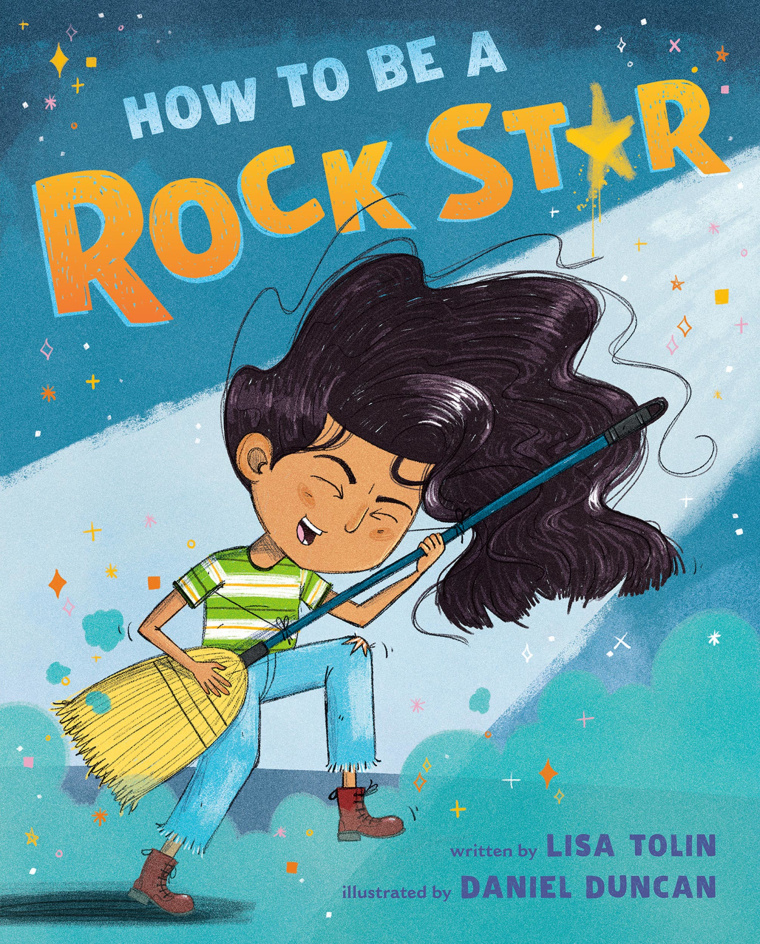The first time I read to my baby, I pulled out a brand new copy of a soul-worn book, “The Very Hungry Caterpillar.” This would be special. This would be emotional. This would be #blessed.
This would be … a crying baby. So I tried again. And again. And again. Each time, my baby cried by the time the caterpillar ate through four strawberries. Talk about a reluctant reader.
Fast-forward a decade, and I have two children who read happily for pleasure and scoff that movies aren’t as good as the books. How did we get here? In the years between, I wrote children’s books myself (“How to Be a Rock Star,” illustrated by Daniel Duncan) and happened upon some useful tips to get kids reading — even over the summer. Here are a few:
Related: Read With Jenna Jr.: See all 27 books on the kid-friendly reading list
1. Picture Books Are for Everyone
Publishers like to label picture books with ages, usually 3-7 or 4-8. They should be E for Everyone. Yes, your baby might rip the pages of a picture book. Hand the baby a toy, or a more resilient board book, while you read.
On the older end, I once saw a mother telling a child she had to give away a stack of picture books because she was a "big girl." The child was crying, and I nearly did, too. There is no such thing as too old for picture books. Don’t be so quick to put them away when it’s time for “real” reading.

My 11-year-old still reads picture books for fun, or as entry points for nonfiction. And one of the great joys of my life has been rediscovering the beauty of picture books as an adult. Here’s a secret: The vocabulary in picture books is more advanced than that in young chapter books. Emerging readers should have both.
2. There’s no such thing as ‘real’ reading
I have interviewed literacy experts over the years, and they’re unanimous: Kids should read whatever lights them up. That might be comic books, graphic novels, sports magazines or nonfiction about a specific kind of rock.
Let me repeat an important part of that: Kids should read graphic novels. A lot of parents think books like “Dog Man” are taking away from the “real” reading of chapter books. Instead, think of it like this: Graphic novels add illustrations to keep kids engaged, and context clues to help them understand the words.
Literacy experts might call it “scaffolding.” I would just call it common sense, to let kids read what they want. Remember how you used to read cereal boxes? These are better.
3. Leave a book out
Another tip from literacy experts is to surround a child with books. There’s research to back this up. Studies have found that simply having more books in the house is correlated with academic achievement.
As I wrote “How to Be a Rock Star,” I brought home tote bags of picture books from the library. To my children, I may as well have been Santa. They’d rip through the bags and demand that I read. I learned by observing what made them laugh, what touched them, what made them clap at the end of a book.
Now, if I want my kids to read a book, I leave one somewhere for them to “find.” Just putting it in their line of vision often leads them to dive in.
4. Keep reading aloud
As someone exhausted by pandemic parenting (aren’t we all), I understand the appeal of sending kids to read quietly as soon as that’s something they can do. And we certainly encourage independent reading in our house.
At the same time, reading a book to children activates a different kind of thinking and connection. If you’re pressed for time, you can’t go wrong with a picture book. (And it cuts down on “just one more chapter!” at bedtime.) Plus, reading aloud gives you a chance to crack your kids up. I wouldn’t pass that up.
5. Don’t set a timer
Well-intentioned teachers and community reading programs encourage kids to read for a set amount of time, or rack up a certain number of books to win a prize. It sounds great in theory, but might communicate to kids that reading is a chore they should do only for a set amount of time, or if they get a personal pan pizza at the end.
Literacy expert Pernille Ripp has a letter that she sends to teachers who assign reading logs to her children. It explains, gently, that her family wants reading to be its own reward. It’s a useful note to crib, and a lesson for anyone who wants to raise a joyful reader.
